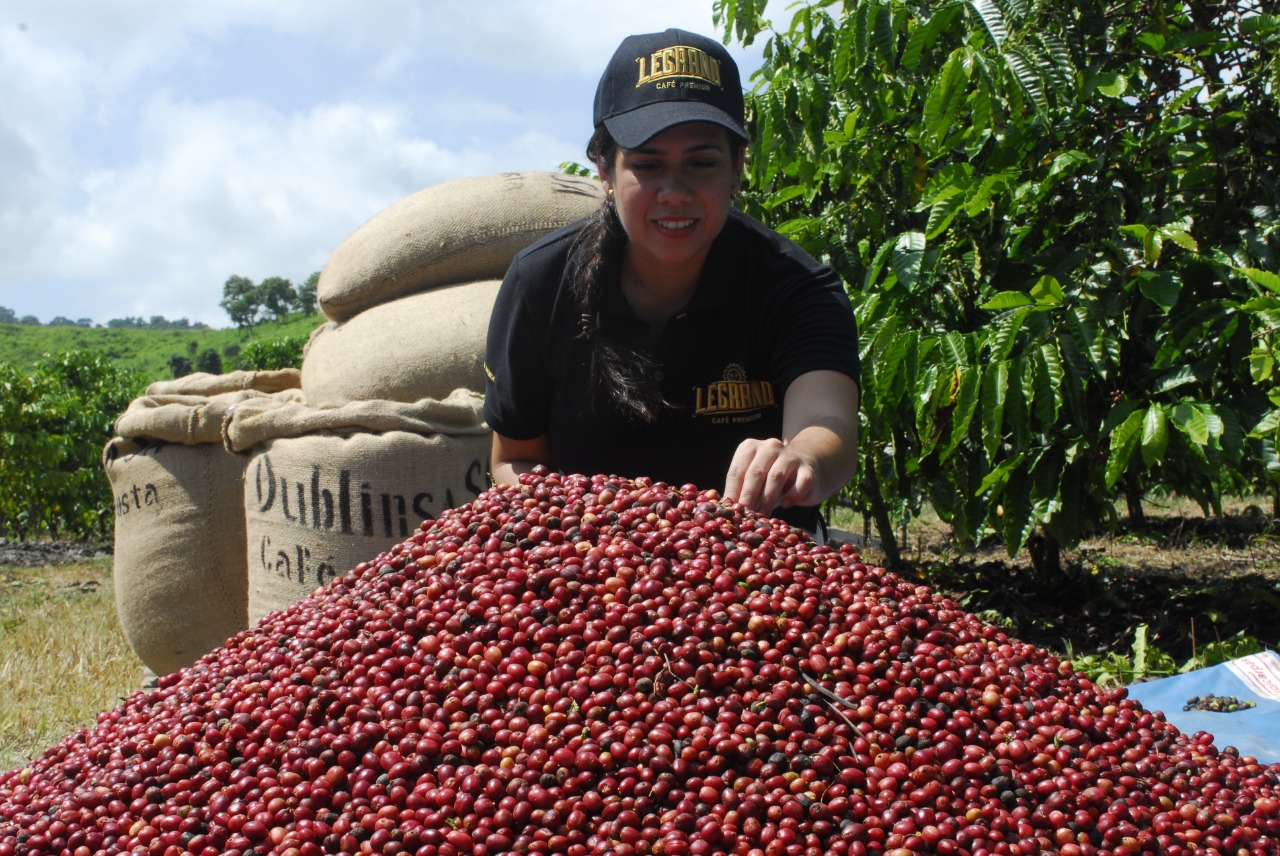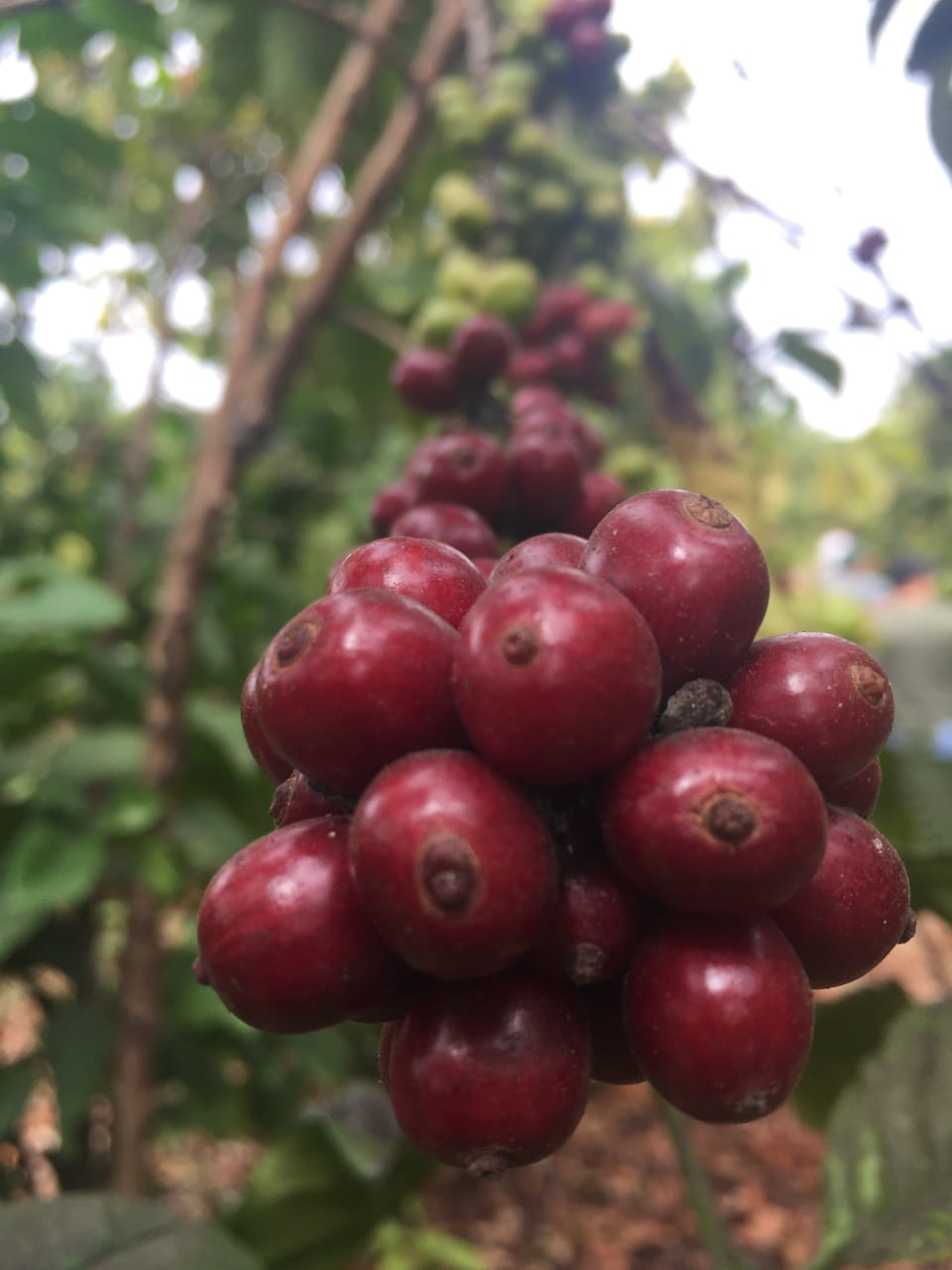Raise your hand if you've ever heard a barista or coffee professional say, "Robusta is a lower quality bean." or, "Robusta? EW!" I know I have. Hell, I've even said it a few times! In fact, I have a very distinct memory of when I first found out what Robusta coffee even was. I was working at a coffee shop in college when a friend who was working at a different coffee shop messaged me and said, "Hey, does xxx use Robusta or Arabica beans in their coffees?" Me being about three months in to my coffee career had literally no idea what that meant. So, I did some research and found out two things. One: we used Arabica beans. Two: Robusta = bad. Low quality, high in caffeine, seemingly for those who "don't care" about the coffee they drink. So, there I was, in 2013, already judging a coffee species I had never even tried.
But what do you know about Robusta really?
 Robusta is a hardy coffee species that contains more caffeine, less sugars, and has a higher crop yield than Arabica. This coffee grows and thrives in lower elevations with high humidity. Robusta is known for its lower acidity and high bitterness. Traditionally seen as a blender coffee we are starting to see some excellent, dare I say fine, robustas coming out and the world needs to know!
Robusta is a hardy coffee species that contains more caffeine, less sugars, and has a higher crop yield than Arabica. This coffee grows and thrives in lower elevations with high humidity. Robusta is known for its lower acidity and high bitterness. Traditionally seen as a blender coffee we are starting to see some excellent, dare I say fine, robustas coming out and the world needs to know!
Unlike Arabica coffee, Robusta coffee requires cross pollination. (As does tea and cacao!) Cross pollination leads to greater genetic diversification. This detail is important because it may hold the key to why Robusta coffee is more resistant to coffee leaf rust and other pests/diseases that hurt Arabica coffees. Arabica coffee is easier to breed for quality as it is asexual and will just breed a new tree from itself. Because Robusta coffee relies on cross pollination it requires more attention to be paid to how and what it is planted next to.
 Denise Bustamante, Masters student in Coffee Economics and Sciences, and Q Grader of both Robusta and Arabica from Ecuador, has been working on a Robusta hybrid called Ecurobusta01. Stick with me here, I'm going to try to lay this out as simply as possible. They started with 100 trees in their study and narrowed this down to a set of 32 trees that passed a checklist of thirty different criteria. These 32 trees were monitored and finally 9 were chosen as the 'elite trees' that would be planted in the cloner garden. These 9 trees only had each other to cross pollinate with, so the resulting seed was high quality. This high-quality seed is Ecurobusta01.
Denise Bustamante, Masters student in Coffee Economics and Sciences, and Q Grader of both Robusta and Arabica from Ecuador, has been working on a Robusta hybrid called Ecurobusta01. Stick with me here, I'm going to try to lay this out as simply as possible. They started with 100 trees in their study and narrowed this down to a set of 32 trees that passed a checklist of thirty different criteria. These 32 trees were monitored and finally 9 were chosen as the 'elite trees' that would be planted in the cloner garden. These 9 trees only had each other to cross pollinate with, so the resulting seed was high quality. This high-quality seed is Ecurobusta01.
Ecurobusta01 was given to farmers around Ecuador in 2015 and has since seen successes in cupping scores of up to 85 points. In fact, Johann Buenaño, Ecuador's current Brewers Cup Champion, won using a natural Ecurobusta01 coffee. Johann's story is fascinating and you should check him out on Instagram. His handle is @johann_whitechocolate. Follow his journey to worlds where he plans on using another Robusta to compete.
 Denise has purchased a farm where she plans to run more experiments on Robusta. One of her main concerns is that there just isn't much research on Robusta. The Coffee Quality Institute, CQI, created the Q Robusta Grader program in 2010 to help evaluate Fine Robustas. They have since released standards for green grading, and cupping sheets. World Coffee Research, WCR, has started looking in to a multi-location Robusta trial. Where they would take high quality robustas and plant them in different climates all around the world to see how these trees do. They are also hoping to set up a Robusta coffee hub in Uganda to learn about and promote Robusta breeding. You can hear more about what CQI and WCR are doing with Robusta on The Coffee Podcast episodes 124 and 125. The Coffee Podcast is hosted by Jesse Hartman. Also, give a listen to episode 109 of Boss Barista Podcast hosted by Ashley Rodriguez. Ashley speaks with Sahra Nguyen of Nguyen Coffee Supply in Brooklyn, New York. Sahra specializes in coffees from Vietnam which is the #1 producer of Robusta coffee in the world.
Denise has purchased a farm where she plans to run more experiments on Robusta. One of her main concerns is that there just isn't much research on Robusta. The Coffee Quality Institute, CQI, created the Q Robusta Grader program in 2010 to help evaluate Fine Robustas. They have since released standards for green grading, and cupping sheets. World Coffee Research, WCR, has started looking in to a multi-location Robusta trial. Where they would take high quality robustas and plant them in different climates all around the world to see how these trees do. They are also hoping to set up a Robusta coffee hub in Uganda to learn about and promote Robusta breeding. You can hear more about what CQI and WCR are doing with Robusta on The Coffee Podcast episodes 124 and 125. The Coffee Podcast is hosted by Jesse Hartman. Also, give a listen to episode 109 of Boss Barista Podcast hosted by Ashley Rodriguez. Ashley speaks with Sahra Nguyen of Nguyen Coffee Supply in Brooklyn, New York. Sahra specializes in coffees from Vietnam which is the #1 producer of Robusta coffee in the world.
This conversation is far from over. Breeding high quality Robusta is just the first step to producing Fine Robustas. As Denise said regarding Ecurobusta01, "The material is great. Now it's up to the producers to keep it perfect." Read more, listen more, discuss more. Send me your thoughts on Robusta, and research you find. Let's change the future of coffee together.

Here are some links that I found helpful in writing this piece.
Visit http://www.coffeeinstitute.org/ for more information on CQI and https://worldcoffeeresearch.org/ for more information on WCR
Listen to the episodes that were mentioned in this post The Coffee Podcast: https://www.thecoffeepodcast.com/2018/11/30/2018-30-11-e124-coffee-myths-arabica-vs-robusta-part-i/ https://www.thecoffeepodcast.com/2018/12/07/2018-7-12e125-coffee-myths-arabica-vs-robusta-partii/
Boss Barista Podcast: https://open.spotify.com/show/6UwLRZpDaRSSBxZEMQ0X94
Special thanks to Denise Bustamante (@denisebustamantea) for speaking with me about her project and providing the pictures you see here. Umeko Motoyoshi (@umeshiso_) for opening up this discussion on Robusta. And of course, Hiver van Geenhoven (@hiverkairos) of Chromatic Coffee (@chromaticcoffee) for bringing Robusta in and sparking my interest in what Robusta is and has to offer. (@s are Instagram handles)